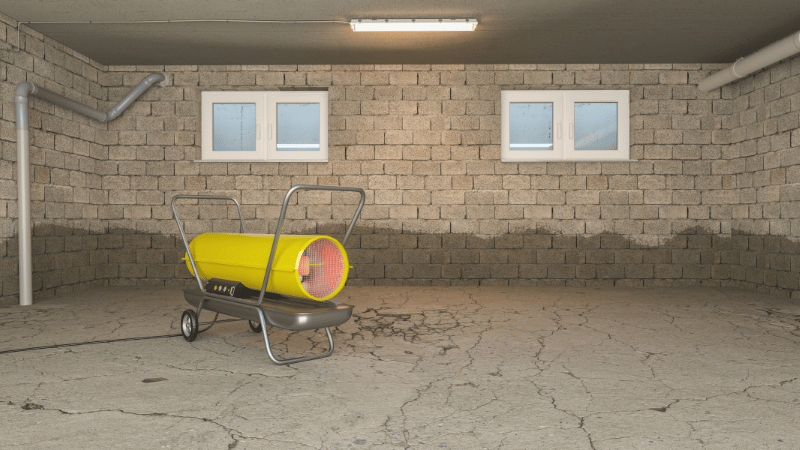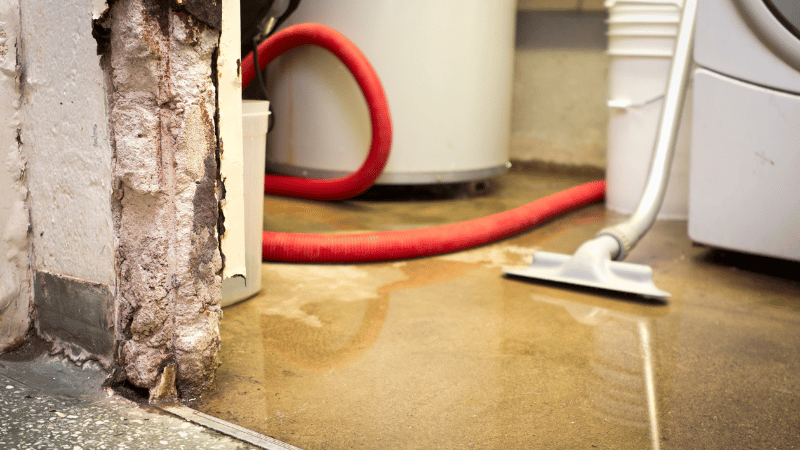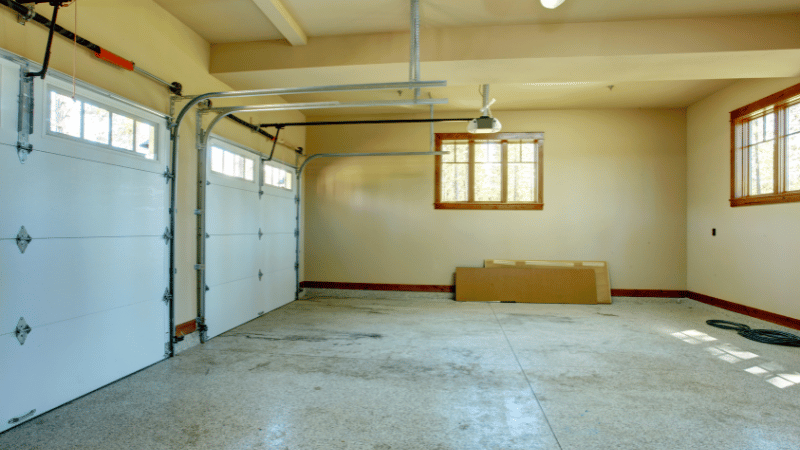If you’ve experienced a flooded garage due to heavy rain or any other reason, it can be a daunting task to clean up and restore it to its pre-flooding condition. To ensure a safe and effective cleanup process, it’s crucial to prioritize safety measures before starting the restoration process. By following a few simple steps, such as removing standing water, clearing out mud, and disinfecting surfaces, you can effectively dry out a flooded garage and prevent further damage.
In this article, we’ll walk you through the essential steps to help you restore your garage to its original state after a flood.
Table of Contents
Understanding the Importance of Drying Out a Flooded Garage
When a garage floods, it is crucial to take immediate action to dry out the space. Flood water can contain contaminants and bacteria that can pose health risks if not properly cleaned and dried out. Failure to do so can lead to mold and mildew growth, which can cause health problems for those who frequent the garage. Mold thrives in damp environments, and a flooded garage provides the perfect conditions for it to spread rapidly.
In addition to health concerns, failing to dry out a flooded garage can also lead to structural damage. Excess moisture can weaken the foundation and walls of the garage, leading to costly repairs down the line. By promptly drying out the space, you can prevent further damage and preserve the integrity of your garage.
Furthermore, a damp garage can attract pests such as insects and rodents looking for water and shelter. By thoroughly drying out the space and removing any standing water, you can deter pests from making themselves at home in your garage. This can help to maintain a clean and safe environment for your belongings and equipment stored in the garage.
Safety Precautions
Before beginning the process of drying out your flooded garage, it is crucial to prioritize safety. Taking the following precautions can help ensure that you and your family remain safe throughout the cleanup process:
Turn off the power: Before entering the flooded garage, be sure to turn off the power to prevent any electrical hazards. Water and electricity do not mix, so it is essential to cut off the power source to avoid any potential risks.
Wear protective gear: When dealing with a flooded garage, it is important to protect yourself from potential hazards. Wear gloves, boots, and safety glasses to prevent injuries from sharp objects or contaminated water. Consider wearing a mask to protect your respiratory system from inhaling harmful bacteria or mold spores.
Watch for slippery surfaces: Wet floors can be extremely slippery, increasing the risk of falls and injuries. Be cautious when moving around the garage and consider placing non-slip mats or towels on the floor to provide better traction.
Assessing the Extent of the Damage
Take the time to evaluate the water level and the areas that have been affected. This will help determine the best course of action and the equipment you will need.
- Measure the water level: Use a ruler or measuring tape to determine the depth of the water in your garage. This will give you an idea of how severe the flooding is and help you plan accordingly.
- Inspect the walls and floors: Look for any signs of water damage on the walls, such as discoloration or bubbling paint. Check the floors for any warping or damaged areas. This will give you an idea of whether any repairs or replacements may be necessary.
- Determine the source of the flooding: If the flooding is due to a burst pipe or heavy rainstorm, it is crucial to address the source of the water to prevent future incidents. Fix any plumbing issues or ensure proper drainage to avoid recurring flooding.
Removing Standing Water
Once you have assessed the damage and ensured your safety, the next step is to remove the standing water from your flooded garage. Here are some methods you can employ to effectively eliminate the excess water:
- Use a pump or wet/dry vacuum: If the water level is high, a pump or wet/dry vacuum can be highly useful in removing the majority of the standing water. These tools are designed to handle large amounts of water and can speed up the drying process significantly. Be sure to follow the manufacturer’s instructions and take the necessary precautions while operating these devices.
- Use buckets and mops: If the water level is relatively low or you don’t have access to specialized equipment, you can manually remove the water using buckets and mops. Start by scooping the water into buckets and then pouring it down a drain or outside. Use mops or absorbent towels to soak up any remaining water and wring them out into the buckets.
- Create drainage channels: In some cases, the water may be pooling in specific areas. By creating small channels using shovels or brooms, you can redirect the water towards a drain or outside. This can help facilitate the draining process and prevent further damage to your garage.

Drying Out the Garage
Once you have removed the standing water, the next step is to dry out your garage. Here are some methods to effectively dry out the space:
- Open windows and doors: Start by opening any windows and doors in the garage to improve air circulation. This will help to dissipate moisture and speed up the drying process. If weather permits, leave them open for as long as possible.
- Use fans: Place fans strategically around the garage to promote air movement. Position them towards wet areas such as walls, floors, and corners. This will help to evaporate the remaining moisture and prevent the growth of mold and mildew. Consider using oscillating fans to cover a larger area.
- Utilize dehumidifiers: Dehumidifiers are designed to remove excess moisture from the air, making them an effective tool in drying out a flooded garage. Place one or more dehumidifiers in the garage and set them to the highest setting. Empty the water collection tank regularly to ensure efficient operation.
- Apply heat: Using heaters or portable heaters can help to increase the temperature in the garage, aiding in the drying process. Be cautious when using heaters and avoid placing them near any flammable materials or in close
Salvaging Furniture and Items
When salvaging furniture and items after a flood, it is important to assess the extent of water damage on each item. Upholstered furniture may need to be professionally cleaned and dried to prevent mold growth. Wood furniture should be thoroughly dried out to prevent warping or rotting. For items such as rugs and curtains, it is best to hang them outside to dry in the sun and air them out to remove any musty odors.
Additionally, for electronic items that have been affected by the flood, it is crucial to have them inspected by a professional before attempting to use them again. Water damage can cause irreparable harm to electronics, so it is better to be safe than sorry. Be sure to document any damage to furniture and items for insurance purposes, as this will help with your claim.
Treating and Preventing Mold Growth
Treating and preventing mold growth is essential when drying out a flooded garage. Mold can begin to grow within 24 to 48 hours after water damage, so it is important to take immediate action. Here are some steps to follow:
Remove standing water:
If there is still standing water in the garage, use a wet/dry vacuum or pump to remove it. Be sure to wear protective gear such as rubber gloves and boots to avoid contact with contaminated water.
Clean and disinfect:
Thoroughly clean all surfaces with a mixture of water and a mold-killing cleaner or a bleach solution. Follow the manufacturer’s instructions for appropriate dilution ratios. Pay special attention to areas that were submerged in water and areas that may have absorbed moisture, such as drywall.
Dry thoroughly:
Continue the drying process by using fans and dehumidifiers as mentioned earlier. It is crucial to eliminate all moisture to prevent mold growth.
Inspect for mold:
Once the garage is dry, thoroughly inspect all areas for signs of mold growth. Look for visible mold, musty odors, and discoloration on walls, floors, and any other surfaces. If mold is found, it is recommended to contact a professional mold remediation company to properly remove and treat the mold.

Preventative Measures for Future Flooding
Preventing future flooding in your garage is essential to avoid the hassle and potential damage caused by water. Here are some preventative measures you can take:
1. Maintain proper drainage: Make sure your garage has a proper drainage system in place. This includes clearing debris from gutters and downspouts to allow water to flow freely away from your garage. Consider installing a French drain or a sump pump to redirect water away from the garage in case of heavy rainfall.
2. Seal any cracks or gaps: Inspect your garage for any cracks or gaps where water can seep in. Use waterproof sealant or caulk to seal these areas, including around windows, doors, and the foundation.
3. Elevate storage items: If you have valuable items or belongings stored in your garage, consider elevating them off the floor. Use shelving or pallets to keep items away from potential water damage in case of flooding.
4. Install flood barriers or barriers: Consider installing flood barriers or sandbags around your garage entrance to prevent water from entering during heavy rainfall. These barriers can divert water away from your garage and protect it from potential flooding.
5. Regular maintenance of water-related appliances: If your garage houses appliances such as a washing machine, water heater, or HVAC system, it is crucial to perform regular maintenance to prevent leaks or malfunctions that could lead to flooding. Inspect these appliances regularly, check for any signs of leaks, and ensure that they are properly connected and functioning.
When to Call a Water Damage Restoration Company
If the flooding in your garage is severe or if you are unsure of how to properly dry out the space, it is recommended to call a water damage restoration company. These professionals have the necessary expertise and equipment to handle water damage situations effectively.
A water damage restoration company will assess the extent of the damage and create a customized plan to dry out your garage. They will use industrial-grade equipment such as dehumidifiers, air movers, and moisture meters to remove excess moisture and thoroughly dry the affected areas. They will also take steps to prevent mold growth and sanitize the space to ensure it is safe for use.
Hiring a water damage restoration company not only saves you time and effort but also ensures that the drying process is done correctly to prevent further damage and potential health hazards.
If you are in the New Jersey area and facing water damage, don’t hesitate to reach out to ServiceMaster by Replacements. For all of your disaster restoration needs, contact us at (732) 842-6917 or fill out a form on our website.







